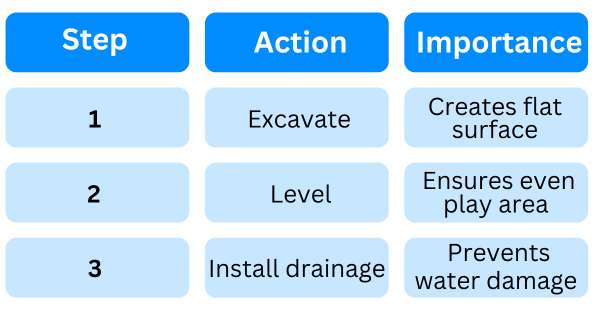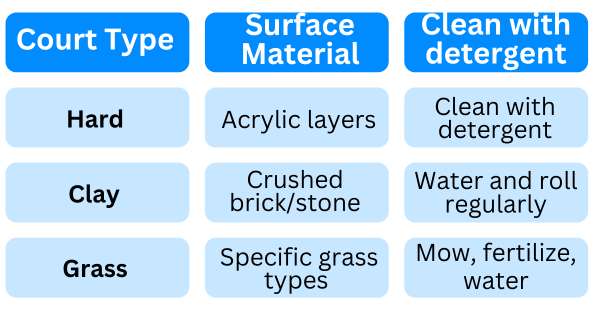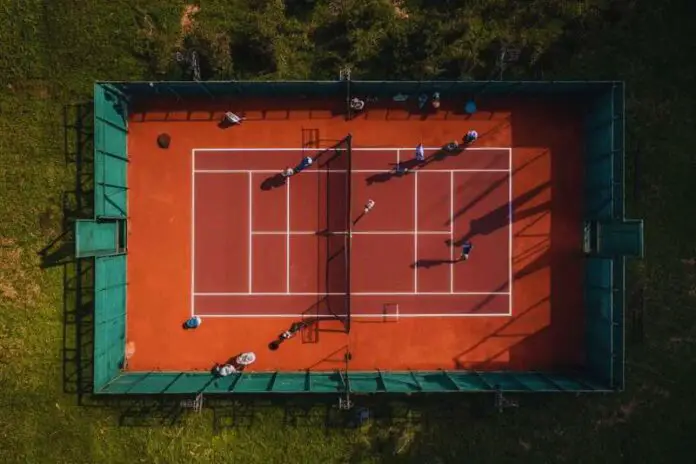Hey! Wanna know how to make a tennis court? Then choose a flat area and install a suitable surface, fencing, and net. Ensure proper dimensions and orientation for optimal play.
Making a tennis court requires perfect planning and execution to create a functional and durable sporting area. The process starts with selecting an appropriate location that provides enough space and is relatively level. A variety of surfaces are available, ranging from classic grass to hard court options like asphalt or concrete, each offering different play characteristics.
The installation of high-quality fencing is important to enclose the area and protect surrounding property. A regulation net is the centerpiece, dividing the court into two equal halves for singles and doubles play. Ensuring the court aligns with the recommended dimensions and is positioned to minimize sun interference is important for player satisfaction. Careful consideration of these elements lays the foundation for a top-tier tennis facility.
Selecting The Ideal Location
Assessing space requirements is the first step. A tennis court needs a lot of space. A standard court is 78 feet long and 27 feet wide for singles. For doubles, the width extends to 36 feet. Make sure the location can fit this size. Also, consider extra space for moving around and watching the game.
Choosing the surface type is also important. There are three main options: grass, clay, or hard court. Each type affects the game differently. Grass courts make the ball move fast. Clay courts slow the ball down. Hard courts are in the middle. Your choice will depend on how you like to play the game.

Designing The Court Layout
Designing a tennis court requires knowledge of standard dimensions and orientation. A tennis court is 78 feet long and, for singles matches, 27 feet wide. For doubles, the width extends to 36 feet. The court’s orientation is important for player comfort. Ideally, it should run north-south to minimize sun interference.
To mark the boundaries, durable materials are used. These ensure clear and long-lasting lines. White paint is often chosen for its visibility. Regular maintenance keeps the lines visible and the court safe for players.
Preparing The Ground
Preparing the ground for a tennis court is a critical step. First, excavation is necessary to remove any debris and to create a flat surface. This process involves digging out the area to the required depth. The goal is to achieve a level base, which is important for a good playing surface.
After the ground is flat, drainage solutions are essential. Proper drainage prevents water from pooling on the surface. A common method is installing perforated pipes. These pipes channel water away from the court. A slightly sloped design ensures water runs off efficiently. This keeps the court dry and ready for play.

Constructing The Base Layer
Constructing a tennis court requires a solid base layer. Essential for longevity and performance, the foundation must be both stable and level. The materials used for this critical layer often include crushed stone, gravel, and concrete. These elements provide strength and durability to the structure. Proper compaction of these materials ensures stability for the surface above.
For ideal compaction, layering and watering techniques are important. Each layer should be compacted separately. This process eliminates air pockets and creates uniformity across the base. A mechanical compactor may be used for best results. A firm and robust base layer sets the stage for the court’s final surfacing.
Applying The Surface Material
Applying the surface material to a tennis court varies by the court type. Hard courts need layers of acrylic material. This gives them color and bounce. Clay courts use crushed brick, stone, or shale. These materials sit on a rock base. Grass courts require specific grass types, often rye.
Surface maintenance is key for a good game. Hard courts should be cleaned often. Use a mild detergent and soft brushes. For clay courts, regular watering keeps the surface firm. Also, rolling the court helps. Grass courts need mowing to keep the grass short. Fertilizing and watering are also important.

Installing Court Accessories
Installing nets and posts is a key step. First, choose the right materials. Strong metal or wooden posts are best. The net should be of high quality, ensuring it lasts long. Place the posts at each end of the court. Make sure they are stable in the ground. Attach the net tightly between the posts. This setup should be both sturdy and straight.
Lighting and fencing are also important. For lighting, LED lights work well. They should illuminate the entire court evenly. Place them around the court’s perimeter. This allows for night play. Fencing keeps the balls within the court. A mesh wire fence is a good choice. It should be tall enough to stop balls from escaping. Both lighting and fencing ensure safety and playability.
Frequently Asked Questions
What Is The Cheapest Surface For A Tennis Court?
The cheapest surface for a tennis court is generally asphalt, known for its cost-effectiveness and durability.
How To Make A Tennis Court In The Backyard?
Measure your backyard space to ensure it fits a tennis court. Choose the court’s orientation, avoiding direct sunlight angles. Hire professionals to install the surface, fencing, and proper drainage. Purchase net and court equipment. Regularly maintain the court’s surface for optimal play.
Can You Make A Tennis Court Out Of Concrete?
Yes, you can construct a tennis court using concrete, a popular and durable material choice for building hard court surfaces.
How To Build A Hard Surface Tennis Court?
Choose a level location, prepare the subbase, lay asphalt or concrete, apply an acrylic surface coating, and finish with lines and nets.
What Materials Are Needed For A Tennis Court?
A tennis court requires a flat, stable surface such as asphalt or concrete, along with acrylic surface coatings, line paint, and netting equipment.
Conclusion
Crafting your own tennis court can be a rewarding project. By following the steps outlined, you’ll be set for countless matches on a court that’s truly your own. Remember, proper planning and maintenance are key to a quality build. Now, grab your racket and enjoy the game on your personal court!


